RQA Indicator Spotlight: Equity concentration risk
In recent years, the U.S. stock market has experienced a notable shift toward increased concentration, especially within the technology sector. This trend has significantly reshaped investment landscapes, prompting crucial discussions about market stability and volatility. Understanding both the opportunities and challenges associated with this market concentration is essential for investors navigating these complex dynamics.
Market Concentration: A Growing Trend
Market concentration occurs when a significant portion of a market's capitalization is held by a few top companies. Currently, major technology firms like Nvidia, Apple, Amazon, Microsoft, and Google's parent company, Alphabet, lead in market capitalization. Their significant market shares and considerable influence on indices like the S&P 500 mean that fluctuations in their stock prices can significantly sway the overall market direction, amplifying gains and losses across the board. The historical levels of market concentration for the top 1, 3, and 10 U.S. stocks over the past 70+ years illustrate this point.
Source: Factset and Counterpoint Global.
Today's Concentration Drivers & Risk Factors
The technology sector's dominance is fueled by innovations in AI, cloud computing, and consumer electronics. These sectors have driven market trends and generated substantial economic profits. Over the past decade, the top 10 stocks have averaged 19% of market capitalization while contributing 47% of economic profit, indicating that the fundamentals of these leading companies are relatively solid.
Source: Factset and Counterpoint Global.
However, this concentration comes with risks. The market is more sensitive to the performance of these leading companies, and increased scrutiny from U.S. and European regulators could lead to significant market shifts. Additionally, debates about overvaluation, particularly across the tech sector, could result in adjustments if growth expectations are not met.
Market Concentration & Historical Returns
When examining historical market returns in relation to periods of increasing or declining market concentration, markets tend to perform better during phases of rising concentration. As depicted in the graphic below, the green lines indicate periods of rising concentration, accompanied by the average return for the S&P 500 during these times. Conversely, the red lines represent periods of declining concentration.
Source: Factset and Counterpoint Global.
In summary, the market generates above-trend returns during periods of rising concentration. However, when there is a lack of dominant company or sector leadership, returns typically align with or fall below historical averages.
Looking Ahead: Implications for Investors
Investors should adopt a proactive and attentive approach, carefully balancing the potential for growth with the risks of a concentrated market. Diversifying investment portfolios is key, broadening exposure beyond dominant sectors to encompass a variety of industries and asset classes. Additionally, monitoring concentration levels across companies and industries can provide insights into whether we are approaching a rising or falling concentration environment.
Economic Forecast Model
In May, the RQA Economic Forecast Model output adjusted down to 0.43 from the previous month high of 0.51. This shift was largely led by a decline in ISM Services PMI figures.
It is not uncommon for the economic model to experience modest downward moves while remaining in a positively trending growth environment. That said, given this was the first downward shift in rate of growth, we’ll want to monitor for any large changes in direction in the next 2-3 months.
Source: Analysis by RQA. Data from U.S. Federal Reserve; Bureau of Labor Statistics; Norgate Premium Data; Institute for Supply Management.
The RQA Economic Forecast Model represents a consolidated composite of key economic leading indicators and market-based explanatory variables. The goal of this composite model is to present a holistic measure of primary U.S. economic growth drivers and their trends over time. (Additional detail on the model’s construction is provided here.)
Values above the zero-line are indicative of positive U.S. economic growth expectations in the near-term, and therefore, indicate economic strength and lesser chance of recessionary pressure. On the other hand, values below the zero-line represent the opposite - a more negative outlook and more elevated probabilities of the U.S. experiencing an economic contraction.
TAKING A CLOSER LOOK AT THE ECONOMIC DRIVERS
In the economic heatmap below, we are able to peak under the hood at a wide mix of underlying growth drivers in the U.S. economy. By reviewing this underlying data in more detail, we are better able to see how the underlying components of the U.S. economic growth picture are behaving through time. The indicators presented below have each proven to have predictive qualities in estimating the future direction of U.S. economic growth.
Source: Analysis by RQA. Data from U.S. Federal Reserve; Bureau of Labor Statistics; Norgate Premium Data; Institute for Supply Management.
Recent insights from our leading indicator dataset reveal a U.S. economy that appears to be stabilizing and growing overall, despite a recent drop in last month’s readings.
Labor
The labor market is exhibiting signs of mild cooling, with a slowdown in job creation and a decline in employment growth. However, there have been recent improvements in initial unemployment claims. While the employment-to-population ratio has remained stable, there has been a decrease in average weekly hours worked over the past year, suggesting underemployment in certain sectors of the U.S. labor market. The overall labor composite index continues to show moderate growth, supporting the notion of a persistently tight labor market in the U.S.
Commercial Output
In the industrial and service sectors, manufacturing and industrial production continue to face pressure, but in recent monthly there have been some signs of trend improvement. The services sector, however, has maintained generally positive growth, although May data indicated a slight decline.
Income & Consumption
Overall, personal income and consumption data have remained robust throughout the first half of the year. Although retail sales experienced a downturn earlier, this drag within the data segment has moderated in recent months. Meanwhile, personal incomes have consistently grown at an elevated rate on a year-over-year basis throughout the period.
Financials & Sentiment
The financial landscape and consumer sentiment continue to be predominantly optimistic. Although the yield curve remains firmly inverted, data from all other categories indicate minimal concerns. Bond spreads are near multi-year lows, and equity performance has stayed significantly elevated. Although consumer sentiment has moderated in recent months, it remains decisively positive.
Inflation & Money Supply
Inflation and monetary trends remain under close scrutiny. Recent inflation trends, which had stalled for several months, are now showing signs of softening according to the latest data. The forthcoming CPI reports will be crucial in providing insights into the market's expectations for potential rate cuts in the latter half of the year.
MARKET REGIME DISCUSSION
As the summer season gets into full force, market activity has stagnated, with trading volumes coming down. While single-name movements continue to show levels of dispersion, overall index volatility has settled back down to multi-month lows. Despite recent CPI data, the market has largely shrugged off any potential concerns, with interest rates continuing to remain rangebound.
This calm appears set to persist through the summer months as investors await the anticipated rate cut, which now has a 2/3 chance of occurring in September. The expectation of this rate cut has contributed to the current market tranquility, as investors seem content to wait for clearer signals before making significant moves.
On the growth side, the RQA forecast model has shown some downward pressure. However, this is likely a reflection of normal market ebbs and flows rather than a strong directional change at this time. It is important to continue monitoring these movements to understand their implications for future growth.
Regarding the economic quadrant output, we continue to lean towards the inflationary boom scenario. Nevertheless, we will keep an eye on the labor market and other leading indicators throughout the summer. By doing so, we aim to stay ahead of any significant shifts and adjust our strategies accordingly.
Source: RQA.







